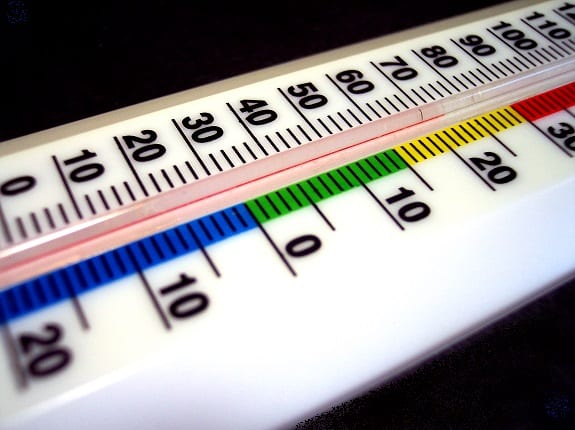Geothermal research leads to promising discovery
July 15, 2014Scientists have developed a method for taking a geothermal reservoir’s temperature.
Geothermal research conducted by Berkley lab scientists has lead to the discovery of a “new” way to take the temperature of deep geothermal reservoirs, which is welcome and positive news for scientists who often find it difficult to estimate the temperature of these reservoirs, especially since gauging the temperature is a key step in determining whether a site should be further explored as a clean renewable energy source.
The new method is based on an old technique.
The process for taking the temperature isn’t exactly new. It is actually a 20 year old technique called solute geothermometry, which has undergone a high-tech transformation. More specifically, the new method involves a computer program known as GeoT that measures a deep reservoir’s temperature. It does this first with the concentrations of dissolved salts from a fluid sample that is attained at the surface, for instance, a hot spring.
From there, it reconstructs the information it has received to reflect what the water composition within a deep geothermal reservoir would be, which could be one kilometer below the earth’s surface. This reconstruction can provide a good indication of the subsurface reservoir’s temperature because a mineral’s solubility is a function of temperature.
Nicolas Spycher, a scientist in Berkley Lab’s Earth Sciences Division and the leader of the project, said “Our method is not intended to replace older techniques, but to complement them and advance a way of investigating deep reservoirs in a more integrated manner.” He added that “It’s another way of increasing our confidence over whether a geothermal resource is worth further study.”
The geothermal research could become an important tool for scientists.
Preliminary tests have shown that it is quite possible that this method is more dependable than current techniques used for thermal waters that have been blended with lost gases, groundwater, or a combination of the two. Thus, it could eventually become an important tool for helping scientist with geothermal site evaluations.
The GeoT software has been tested in Nevada on a geothermal system at Dixie Valley. Spycher said that in the past, it was very time consuming to process whole-water analyses and there was a lot of trial and error required for lining-up mineral saturation points. With the new software, the process is far simpler and multiple waters can be processed simultaneously.
The geothermal research conducted by Spycher and the team of scientist, has resulted in the development of GeoT, which has modernized the traditional solute geothermometry measurements technique.


 HFN News is your leading source for fresh hydrogen and renewable energy updates. Amid the fast-paced growth of hydrogen companies, we provide top-notch news and insights about this exciting sector. Our coverage spans from hydrogen cars to global sustainable initiatives, and we highlight the latest in green jobs and developing hydrogen hubs. We invite you to share your local hydrogen news and explore today’s renewable energy job listings on our site. Thanks for choosing HFN News as your trusted guide to the hydrogen and renewable energy world!
HFN News is your leading source for fresh hydrogen and renewable energy updates. Amid the fast-paced growth of hydrogen companies, we provide top-notch news and insights about this exciting sector. Our coverage spans from hydrogen cars to global sustainable initiatives, and we highlight the latest in green jobs and developing hydrogen hubs. We invite you to share your local hydrogen news and explore today’s renewable energy job listings on our site. Thanks for choosing HFN News as your trusted guide to the hydrogen and renewable energy world!